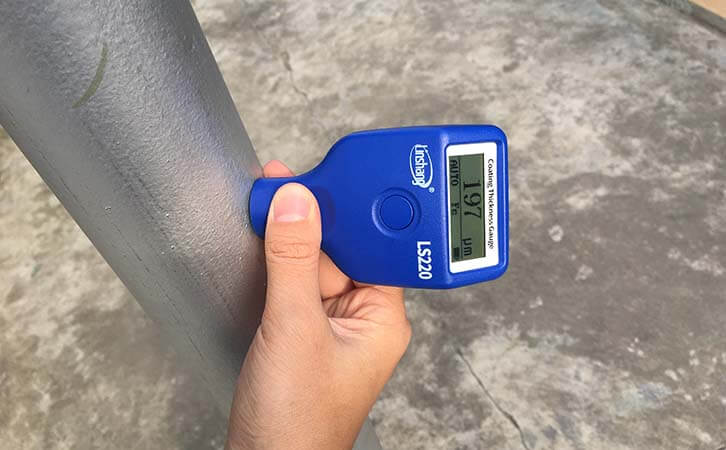Paint Thickness Tester for Pipeline Anticorrosive Coating Thickness Testing
Various pipelines are often used in the petrochemical industry. In order to increase the service life of the pipeline, we will carry out anticorrosive treatment on the interior of the pipeline. Generally, we will apply an anticorrosive coating on the pipeline surface to achieve the purpose of anticorrosion. In some oilfield companies, the economic losses caused by pipeline corrosion are often relatively high. We generally use a paint thickness tester to check the coating thickness on the pipeline surface. Because the thickness and uniformity of the anticorrosive coating are directly related to the production cost and the anticorrosive effect of the pipeline. Improving the quality of anti-corrosion coatings and testing the coating thickness with paint thickness testers have become very important.
1. The common paint thickness tester on the market
At present, the most common measuring principles adopted by the paint thickness testers are ray method, ultrasonic method, magnetic method and eddy current method. The most commonly used methods for nondestructive measurement of metal substrates are the magnetic method and the eddy current method. The paint thickness tester(also a non-destructive measurement) based on the ultrasonic measurement principle can also be used to measure the coating of metal substrates, but the measurement accuracy is not as high as that of the magnetic method and eddy current method. The paint thickness tester based on the principle of radiographic measurement is a destructive measurement.
2. The internal principle of the magnetic paint thickness tester
Dedicated measurement sensors are the core of the entire measurement system for paint thickness testers. This sensor is based on a magnetic thickness measurement method. It can be used to measure the thickness of non-magnetic coatings on the magnetic metal substrates. The sensor has an exciting coil. An oscillator with stable amplitude and frequency is provided at both ends of the coil by an oscillator. When the two magnetic poles of the open-circuit core contact the measured coating surface, the magnetic resistance generated by the magnetic circuit with different coating thicknesses is also different. Therefore, different signals will be generated in the measurement coil and different signals will realize the measurement of coating thickness.
There are some magnetic paint thickness testerson the market that can calculate the real-time value, maximum value and minimum value of the coating thickness and determine whether it is qualified. How does this work? The oscillator will provide a stable positive sine wave AC signal for the coating thickness sensor, which will be transmitted to the sensor's excitation coil after power amplification. When the coating thickness changes, the inductance of the coil will also change, resulting in a change in the voltage across the coil. Thus, the conversion from non-electric power to electric power is completed. After the signal conditioning circuit, filtering, voltage, single-chip microcomputer and terminal data processing, the real-time value, maximum value and minimum value of the coating thickness are calculated and judged to be qualified.
3. The use of paint thickness tester
The thickness of anticorrosive coatings for pipelines in the petrochemical industry is required (take experimental data from Daqing Oilfield as an example). The length of the pipe is 200 meters and the inner diameter of the pipe is in the range of 104-150mm. The thickness of high-quality anticorrosive coatings is generally between 450 μm and 500 μm. The error range of the anticorrosive coating in different places is required to be between 2-3 μm.
According to the requirements of coating thickness and measurement accuracy, it is recommended to use Linshang LS220H paint thickness testser. The measurement range of this instrument is 0-2000μm and the measurement accuracy is ± 3% (reading ± 2μm). This paint thickness tester uses not only the magnetic method principle but also the eddy current method. Therefore, the thickness of the non-magnetic coating on the magnetic substrate and the non-conductive coating thickness on the non-magnetic metal substrate can be measured at the same time.
The instrument has simple design and simple operation. Two operating languages can be switched according to your needs. The ruby probe is wear-resistant. This paint thickness tester also has temperature compensation and analog signal terminal digital functions. Make measurements accurate and simple!
- High precision coating thickness gauge for used car
- Automotive paint protection films coating thickness gauge
- Plating Thickness Measuring Instrument for Detecting Anti-corrosion Coating
- Linshang LS220, LS191, LS160A– Necessary for Car Cover Inspection
- Coating Thickness Gauge for Second Hand Vehicle
- Zero Adjustment Step of Coating Thickness Gauge
